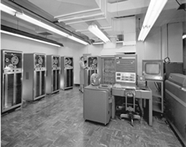Cern

CERN is the European Organization for Nuclear Research, the world’s largest particle physics centre. Here physicists come to explore what matter is made of and what forces hold it together. CERN exists primarily to provide them with the necessary tools. These are accelerators, which accelerate particles to almost the speed…






